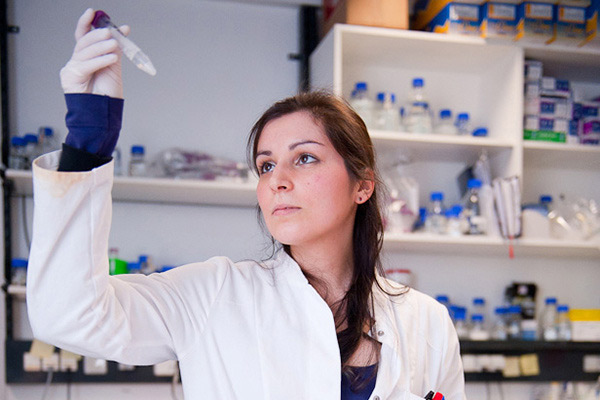 The final step in the production of a biotech medicine is finishing with the correct sugar structure. This step is essential for the efficacy of the medicine, but it also makes the production process very complex and expensive. Leander Meuris, Francis Santens and Nico Callewaert (VIB/UGent) have developed a technology that shortens the sugar structures whilst retaining the therapeutic efficiency. This technology has the potential to make the production of biotech medicines significantly simpler and cheaper.
The final step in the production of a biotech medicine is finishing with the correct sugar structure. This step is essential for the efficacy of the medicine, but it also makes the production process very complex and expensive. Leander Meuris, Francis Santens and Nico Callewaert (VIB/UGent) have developed a technology that shortens the sugar structures whilst retaining the therapeutic efficiency. This technology has the potential to make the production of biotech medicines significantly simpler and cheaper.
Sugar structures are essential for the mechanism of biotech medicines
Nearly all biotech medicines are proteins. Most of these medicines contain a mixture of complicated sugar structures that are attached to the protein. These sugars are important for the mechanism of the medicine on the one hand, but on the other hand their complicated structure also causes problems during production. This makes the process expensive and often results in a mixture of the same protein with different sugars attached. In some cases, only a few of the many sugar forms are ideal for the treatment and others are not, meaning that a part of the production and treatment efficiency is lost.
Optimizing production cells
The proteins that are used as biotech medicines are produced by living cells. Leander Meuris and Nico Callewaert have altered these production cells so that they truncate the sugar structures to a smaller shape. In order to achieve this they added an enzyme obtained from a fungus, which truncates complex sugars, to the production cells. The stump that remains after truncation is then expanded by the cells to form two similar structures that are very suitable for therapeutic applications. Surprisingly, these production cells do not mind: they grow perfectly and continue to produce the therapeutic proteins.
A satisfying discovery
Nico Callewaert (VIB/UGent): “This technology has allowed us to solve an old biotech problem. Since the 1990s, nearly everyone has been working to make the sugar synthesis in biotech production cells as similar to human cells as possible. This is a very difficult task, because there are so many steps in this synthesis pathway. We have been able to create a ‘detour’ in this synthesis pathway in a fairly simple manner, making the pathway much shorter and simpler.”
Leander Meuris (VIB/UGent): “You can compare it to a pollard willow. The branches of willows are pruned to keep the tree more functional, just like our technology in which we removed the complex branches to make biotech medicines more manageable and in some cases more efficient.”